"Bulls and boobies," said Mr. Wild Dingo as we left Knosos, "that pretty much sums up Minoan society."
Well, sorta. There were plenty of other symbols around Knosos.
Knosos was by far my favorite archeological site to visit. And why shouldn't it be? It was partially restored, controversially, in the early 1900's by Sir Arthur Evans to give visitors a stronger impression of life in Minoan Crete. It's an adult Disneyland, minus the roller rides, for adults, like me, lacking a strong imagination. Considered a palace and not a fortress, Knosos did not have high walls to protect itself. Minoans weren't afraid of their neighbors and in fact they traded a lot with Egypt and all over the mediterranean with over 100 trading ports throughout.
Figures and paintings of bulls are found all over Knosos. The fresco above, now in the Irakleio museum, demonstrates one of the Minoan favorite celebration or religious ritual, the bull leaping. This ritual, in connection with bull worship, consists of an acrobatic leap over a bull; when the leaper grasps the bull's horns, the bull will violently jerk his neck upwards giving the leaper the momentum necessary to perform somersaults and other acrobatic tricks or stunts. Occasionally, someone was gorged. Sounds like heaps of fun to me!
Over 100 giant pithos, some restored, are found throughout the palace. I had to resist the urge to pick up small fragments of clay pottery remains, found on the ground in the dirt throughout the site. I always get a charge out of holding something ancient even if it's a just clay shard.
The double axe (known as a labrys) served both as a common carpenter and masonry tool and as a powerful sacred symbol thought to be a cult object connected to the Mother Goddess. The symbol of the double axe is found throughout Knosos on vases, coffins, seals, frescos, pillars and paintings.
Knosos was believed to be an underground maze for imprisoning a Minotaur, a half man and half beast son of King Minos' wife, who was later slain by Thesis. The word labyrinth (maze) is derived from the "labrys," the double axe symbol found all over Knosos.
The Labyrinth symbol is even found on the back of Minoan money.
Some other pieces found in Knosos, now in the Irakleio Archeological Museum left a huge impression. Specifically those things forged in bronze, such as this scabbard. The workman ship is stunning.
This Gold Bee Pendant of two bees joined together dates back to the 17th century BC.
These two pieces were found in a storage area of Knosos. Snakes and bulls were signs of fertility. The figure on the right is thought to represent the snake goddess or priestess performing a religious ritual. Both figures date 1600 B.C. We bought a replica of the snake lady. Because she's just so freaky deaky.
The Minoans were matriarchal society. Queen's ruled, babies! And while they had lots of ritualistic dancing and sacrifices, their palace was quite civilized with flushing toilets and running water. Mr. Wild Dingo enjoyed the Minoan porn in the museums. Sculptures of perfect C cups seemed to be all over the place.
And there was no shortage of Minoan boobie photos on Mr. Wild Dingo's camera memory card.
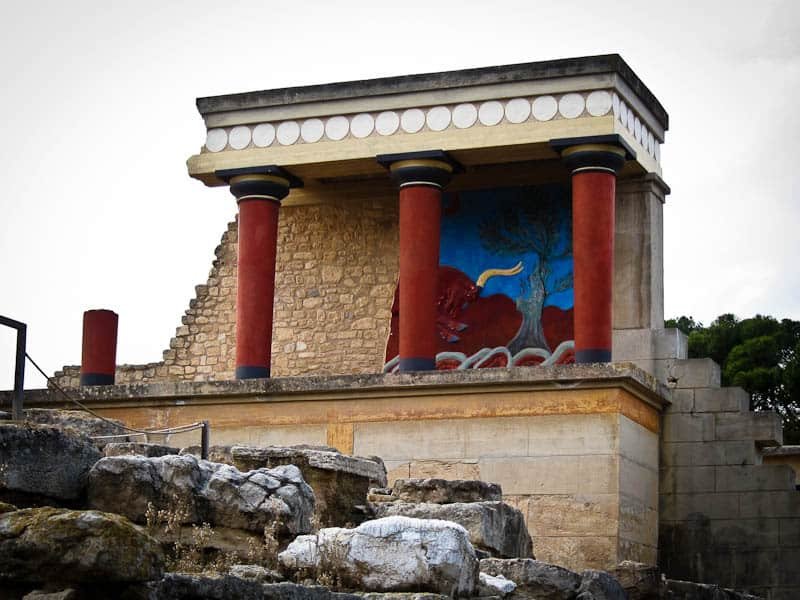
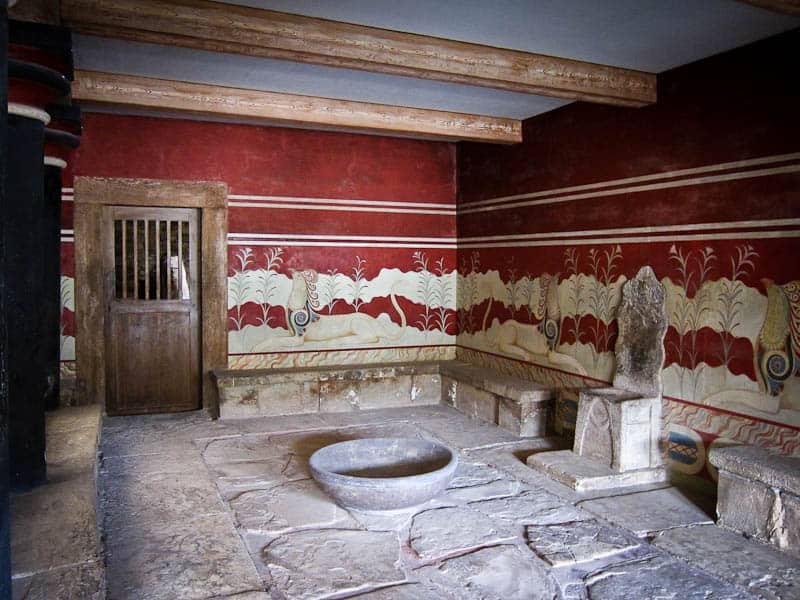
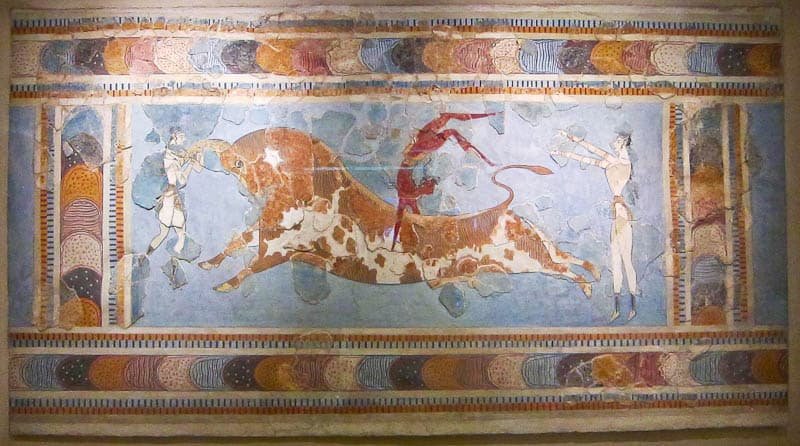

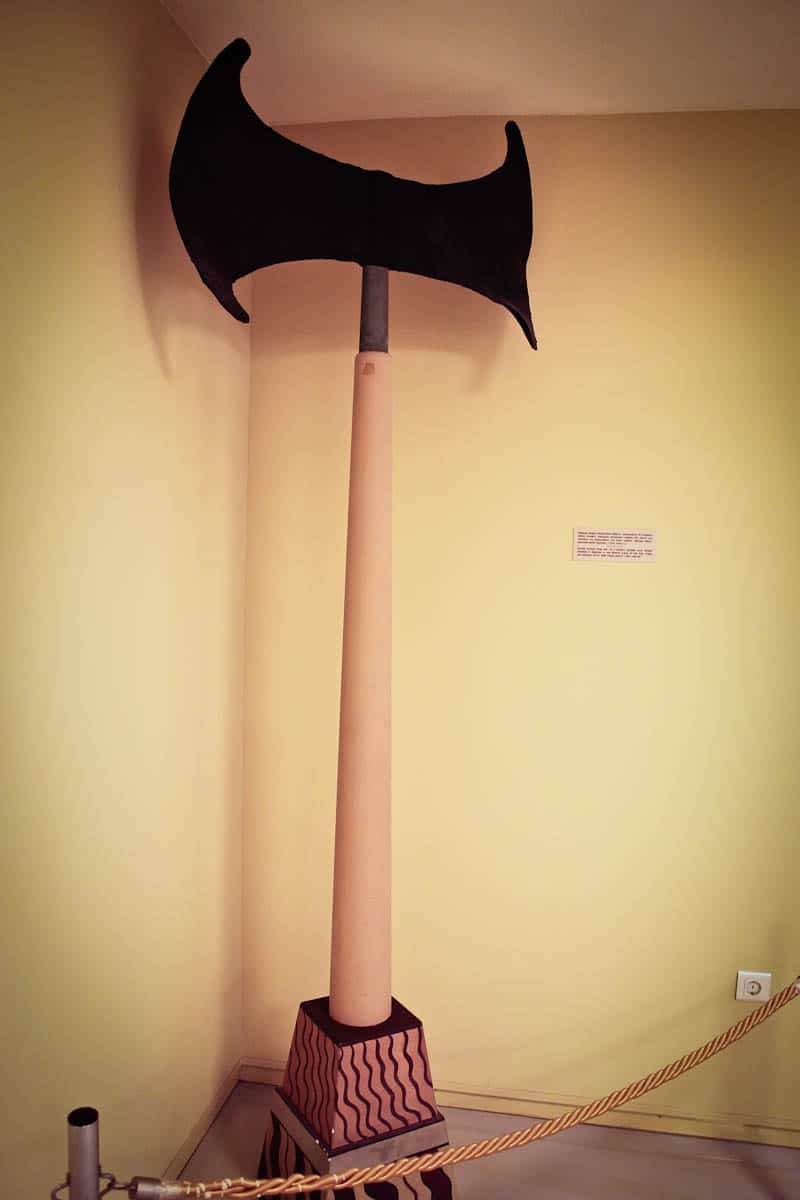
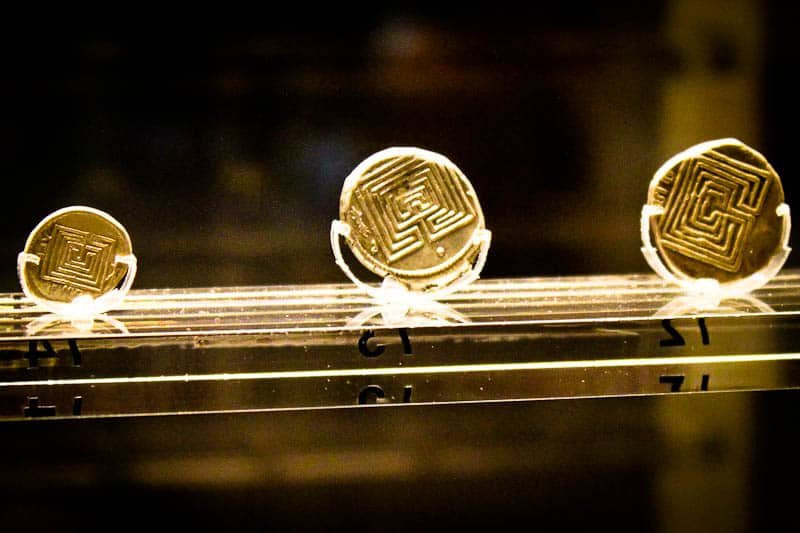
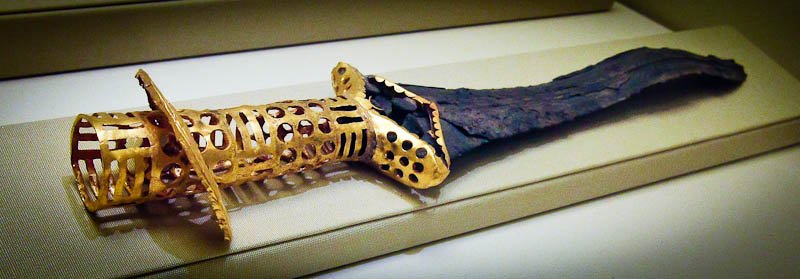

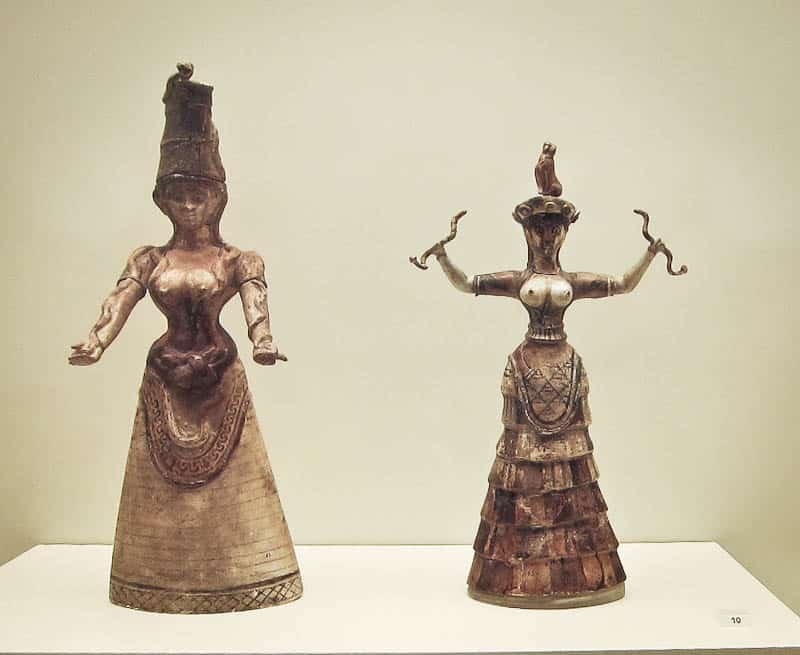
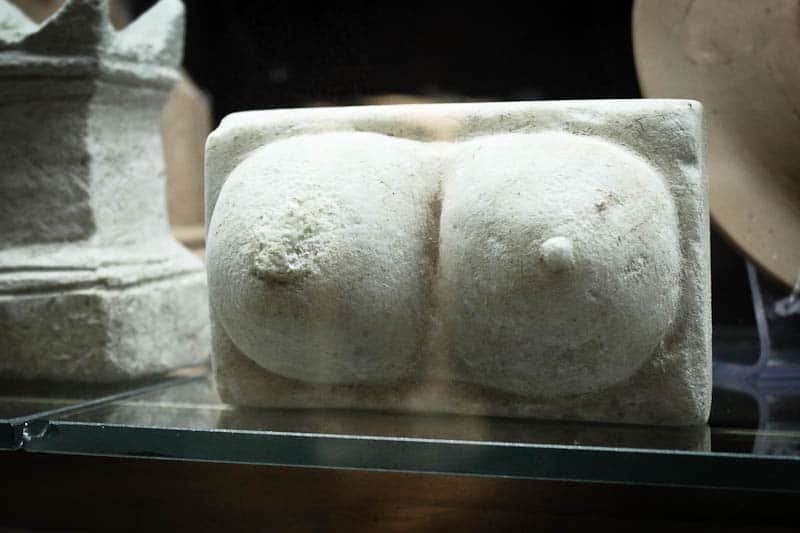
LOL! Boobies everywhere? Its a guy thing - always has been always will be, I guess. OK, so I'm deeply in envy of your travel destinations once again. I've always been fascinated by Knossos, ever since grade school. I seem to recall seeing "bull tumbling" acrobats in a movie or maybe a filmstrip...(dating myself here) I was awe-struck! Enjoy your travels!
Pat
Jack & Moo are sleeping thru the snow falling outside - without a doubt replenishing their energy for later...
Ha! Your last sentence made me lose it!
Ha ha ha! Mr. Wild Dingo would make one heck of a tour guide, I'm thinking! I am seriously jealous of all the cool history you got to see there! What a fantastic trip!
I think Mr. WD summed up Minoan culture quite succinctly. Except maybe it should be bulls, boobies and snakes. I'm assuming you were regaled with tales of how the Minotaur came about, so I'll spare you the kinky details. 😉 But Knossos is definitely a 'must see' - and I can't wait for the Venice photos!
-Dr. Liz, who knows all sorts of weird myths (really, what were my parents thinking?!?)
OK, we can see bulls and boobies as fertility symbols, but snakes? Especially given that so many snakes on Crete and other Greek islands are poisonous. The French can go on about 'la petite morte' all they want, but sex and death just don't go together. Now sex and life, yes. Infer customs didn't confiscate MWD's camera on the grounds he was smuggling porn. Not sure he'd be so lucky with the TSA.
Jed & Abby